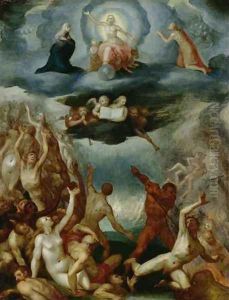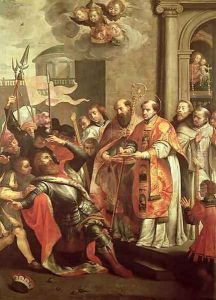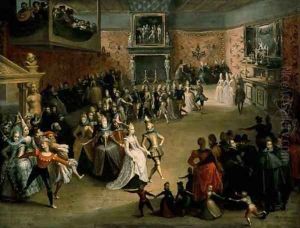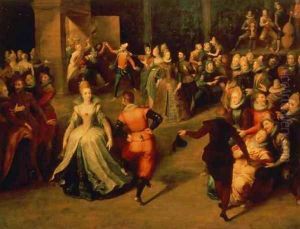Martin Pepyn or Pepin Paintings
Martin Pepyn, also known as Martin Pepin, was a Flemish painter born in 1575 in Antwerp, which was then part of the Spanish Netherlands. As a historical figure within the arts, Pepyn is considered part of the Flemish Baroque tradition that blossomed during the late 16th and early 17th centuries. His style was largely influenced by the Italian Baroque and he is known for his religious compositions, portraits, and history paintings.
Pepyn's education in the arts began under the tutelage of his father, who was also a painter. He furthered his training by becoming a student of the prominent painter Otto van Veen, who is also known for being Peter Paul Rubens' teacher. This connection to van Veen situated Pepyn within a network of artists who were at the forefront of the Flemish Baroque movement, characterized by dramatic expression, vivid detail, and a strong emphasis on light and shadow.
After completing his training, Martin Pepyn became a master in the Antwerp Guild of St. Luke in 1596. His career progressed and he earned recognition and commissions for altarpieces and other religious works. Pepyn's work often reflected the Counter-Reformation's emphasis on religious art that was intended to inspire piety and devotion among the Catholic faithful.
In 1617, Pepyn was named the dean of the Antwerp Guild of St. Luke, indicating his respected position within the artistic community. Despite this, compared to his contemporaries like Rubens, Pepyn's work and influence were somewhat more localized, and he did not achieve the same level of international fame.
Pepyn’s painting style is characterized by a clear influence from Italian masters, a result of his trip to Italy, which was a common practice among artists of his time seeking to perfect their craft. His compositions are noted for their dynamic arrangements and the use of chiaroscuro—the strong contrasts of light and dark—to create a sense of depth and volume.
Martin Pepyn passed away in Antwerp in 1642. While his works may not be as widely recognized as some of his contemporaries', they remain an integral part of the rich tapestry of Flemish Baroque art. His paintings can still be seen in various museums and collections, offering insight into the era's artistic developments and the cultural milieu of the Spanish Netherlands during his lifetime.




